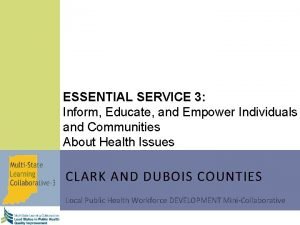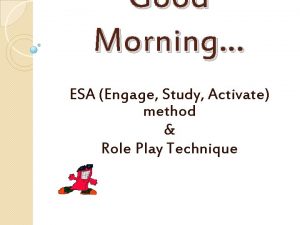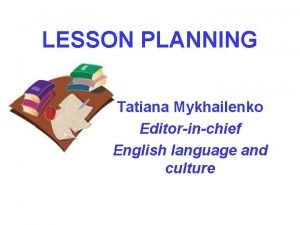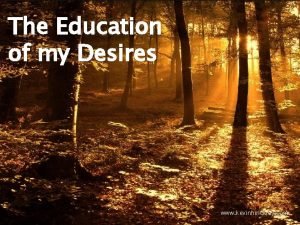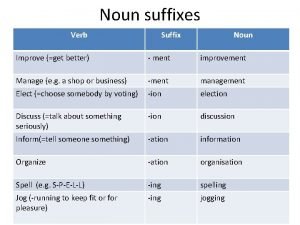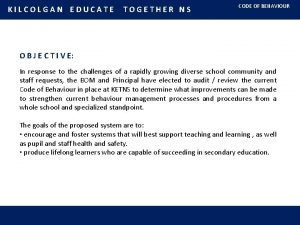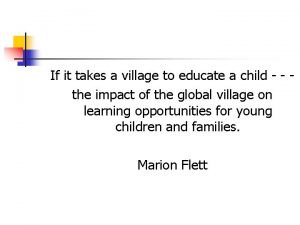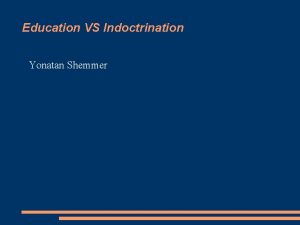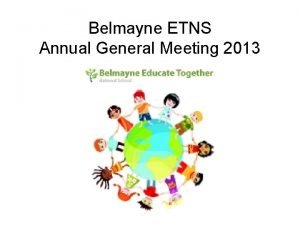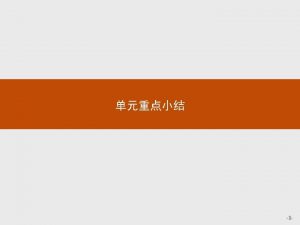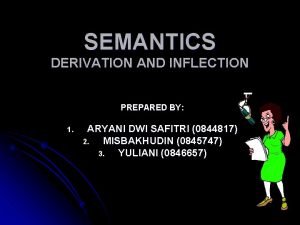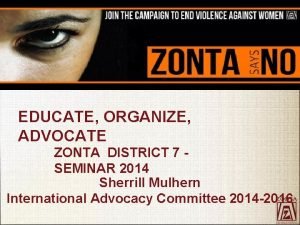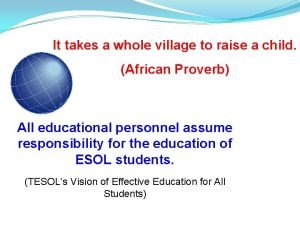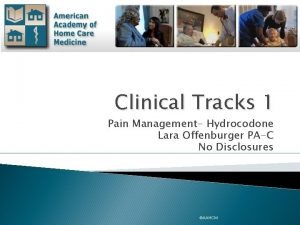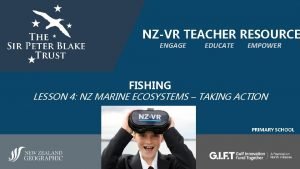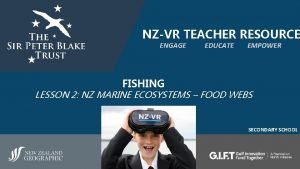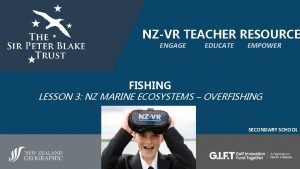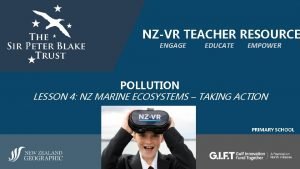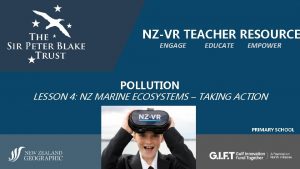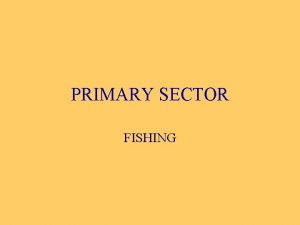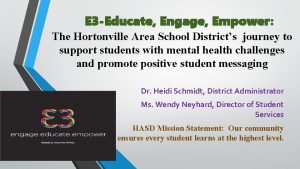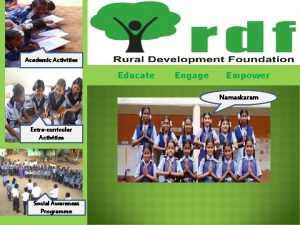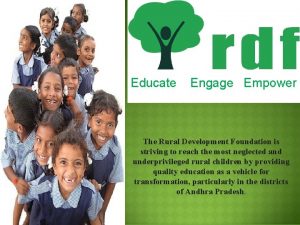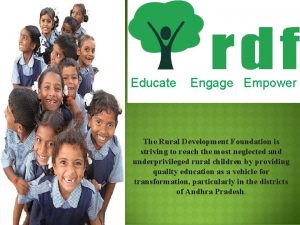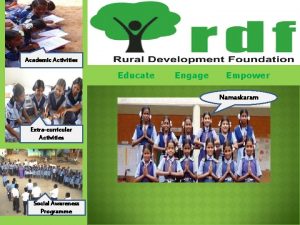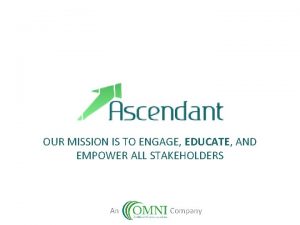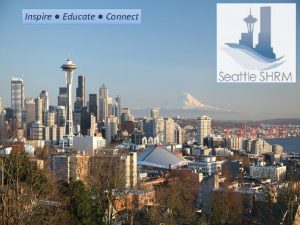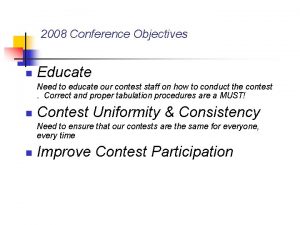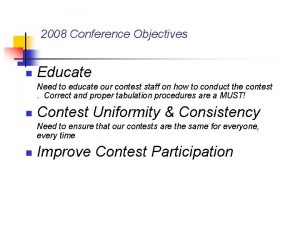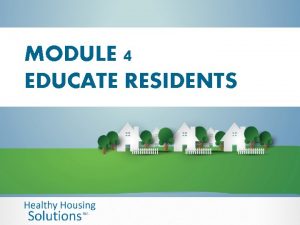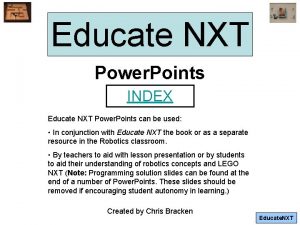NZVR TEACHER RESOURCE ENGAGE EDUCATE EMPOWER FISHING LESSON



















- Slides: 19

NZ-VR TEACHER RESOURCE ENGAGE EDUCATE EMPOWER FISHING LESSON 2: NZ MARINE ECOSYSTEMS – FOOD WEBS PRIMARY SCHOOL

Explore • You are about to go on a virtual expedition around four very different marine locations in New Zealand • Your task as a virtual marine biologist is to record your observations from each virtual expedition Poor Knights Islands Hauraki Gulf Goat Island Three Kings Islands • These are 360 -VR videos: click on the images and then grab to pan on a desktop, or just move a mobile device around you. All devices can be full-screened for the most compelling experience.

THREE KINGS POOR KNIGHTS GOAT ISLAND HAURAKI GULF

360 -VR Observations Poor Knights Hauraki Gulf Goat Island Three Kings

360 -VR Observations (refer to the Species ID resource to identify individual species in each clip) Poor Knights Hauraki Gulf • Lots of small fish (blue maomao, two-spot demoiselles) • Some big fish (snapper, kingfish) • Lots of short-tail sting rays • Lots of colour and life • Clear water – good visibility • • Goat Island Three Kings • Lots of big snapper • Lots of kelp • Clear water – good visibility • • Lots of kina (NZ sea urchin) Lots of bare rock Just a few small fish (trevally) Murky water – poor visibility Lots of kina Some kelp and seaweed Lots of bare rock (with orange sponge) Some small fish (two-spot demoiselles)

NZ Marine Reserves The Poor Knights and Goat Island are fully protected marine reserves These “kina barren” sites at the Three Kings and in Hauraki Gulf are not protected – so why are these sites so different?

Kina Barrens • A kina barren in an area of the seafloor which is bare (or barren) rock but with lots of kina • There is hardly any seaweed or kelp and very few fish Discuss • Do kina barrens have high or low biodiversity? (recall: biodiversity is the number of different species in a habitat) • Are kina barrens a good or bad thing? • Our goal in this lesson is understand what causes these kina barrens

Food Chains • To understand the “kina barren” we need to understand how food chains work • A food chain shows how each living creature gets its food • The arrows represent “who eats who” and always point from the creature being eaten to the one that is doing the eating • A food chain starts with the plants which produce their own food from the sun (by photosynthesis) • Next are the herbivores that eat the plants • Carnivores are meat eaters – they eat the herbivores • A top predator is a species that is not eaten by any other species • What food chain is shown in this video clip?

Food Webs • A food web is a more detailed diagram, showing all the feeding relationships in a habitat • Food webs are usually organized by “trophic level” with producers at the bottom or 1 st trophic level • It is made up of many food chains • Why do the trophic levels get smaller near the top?

Food Web Activity #1 In this activity you will build a marine food web: 1. Cut-out the marine creatures, with their names 2. Use the information provided in the table below to start building a marine food web 3. Space the marine creatures out as much as possible across your desk 4. Use whiteboard pens to draw arrows on your desk (or A 3 paper) to show “who eats whom” 5. Where possible, arrange your food web in trophic levels 6. In your groups, identify a: producer, herbivore, carnivore, top predator 7. Take a photo of your completed food web! Resource adapted from “Canterbury’s Spectacular Coast” (Environment Canterbury)

Food Web Activity #2 • Use the Feeding Behaviour Integrated Literacy Sheets from DOC to build a marine food web which shows the feeding relationship between kelp, kina and snapper

What Might Cause a Kina Barren? • Think: quietly think about your answer (use your food web and the images below) • Pair: discuss your ideas in pairs with your neighbour • Share: be prepared to share your hypothesis with the class

What Causes a Kina Barren? • Watch this video clip

What Causes a Kina Barren? • Kelp is eaten by kina. Kina is eaten by snapper. • What happens if lots of snapper are removed from the food chain? • What might cause lots of snapper to be removed from the food chain?

Explanation: What Causes a Kina Barren • If snapper are overfished, kina lose a predator and the number of kina increases a lot • The kina eat more and more kelp forest, until the reef becomes bare rock • The kelp forest no longer provides a habitat for other marine creatures to live, feed and breed in

Biodiversity and Marine Health • When an area is not overfished (e. g. protected in a marine reserve) snapper are able to control the kina population • This results in the kelp forest being able to thrive, and improves the health of the ecosystem by providing more food and habitats, supporting higher biodiversity • The presence of large predators is an indicator of a healthy marine environment Goat Island

Activity #3: Create a Comic Strip! • Click here to read “The Very Hungry Kina” by Allison Arnold • Create a comic strip from this story using the characters provided to explain how a kina barren forms • This can be done on paper or digitally using powtoon or slowmation. • Use your storyboard to create a drama performance

Activity #4: Food Web Games Fish Forever and EMR have developed these fun games: 1) The Snapper Kina Game: a fun outdoor game for the whole class which combines mime and tag to learn about what causes a kina barren 2) The Food Web Game: a crazy chaotic game where students are marine creatures and use pieces of string to connect themselves to each other to represent the feeding relationships in a marine foodweb. Through this game, students learn the importance of conserving the whole ecosystem, not just individual species

In the next lesson: • We will use our knowledge of food webs and marine reserves to explore overfishing in NZ’s oceans and what action we can take as kaitiaki to better look after our marine environment x e r o f a tr x E s t r pe • Investigate the adaptations (special features) of kina. How do they eat? How do kina move? How do they reproduce? How do kina protect themselves from predators? How do snapper and crayfish eat kina? Watch this clip. • Investigate kelp as a habitat. What marine creatures use kelp as a habitat? What is the impact on the marine ecosystem if kelp forests are removed?
 Educate empower evolve
Educate empower evolve Essential services
Essential services Engage study activate method
Engage study activate method Engage study activate lesson plan example
Engage study activate lesson plan example Educate your desires
Educate your desires Suffix educate
Suffix educate Ketns
Ketns It takes the whole village to educate a child
It takes the whole village to educate a child Walk ikinci hali
Walk ikinci hali Difference between education and indoctrination
Difference between education and indoctrination Belmayne educate together
Belmayne educate together Adj của educate
Adj của educate Vocareum aws
Vocareum aws Explain the social impact of ict
Explain the social impact of ict Courage derivation
Courage derivation Educate women
Educate women It takes a whole village to educate a child
It takes a whole village to educate a child Educate fortox
Educate fortox Resource allocation vs resource leveling
Resource allocation vs resource leveling Perbedaan antara resource loading dan resource levelling
Perbedaan antara resource loading dan resource levelling

